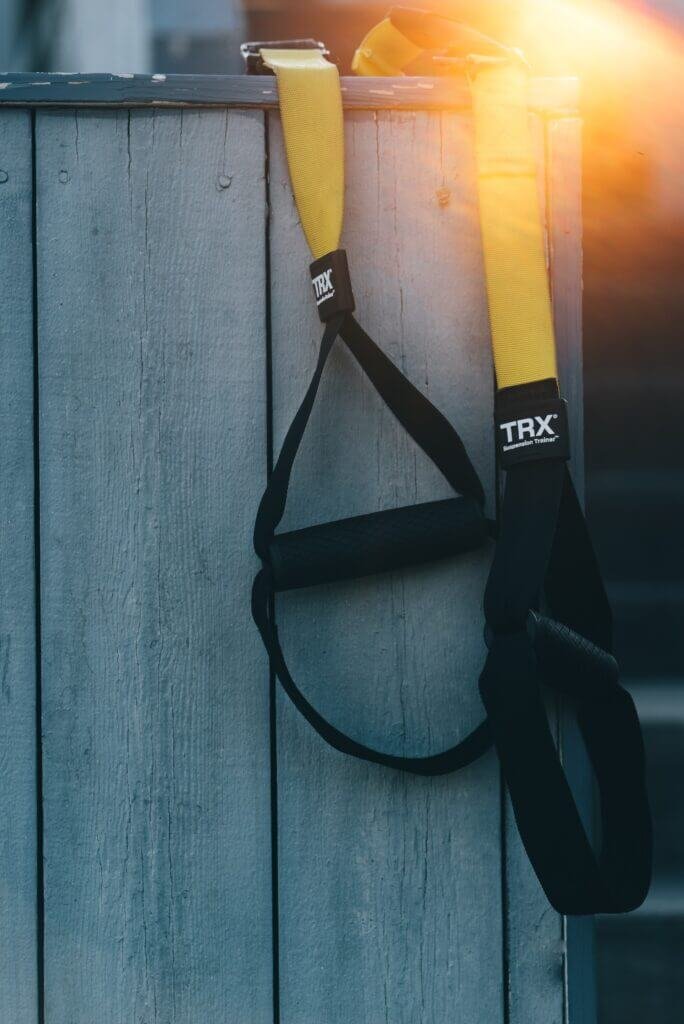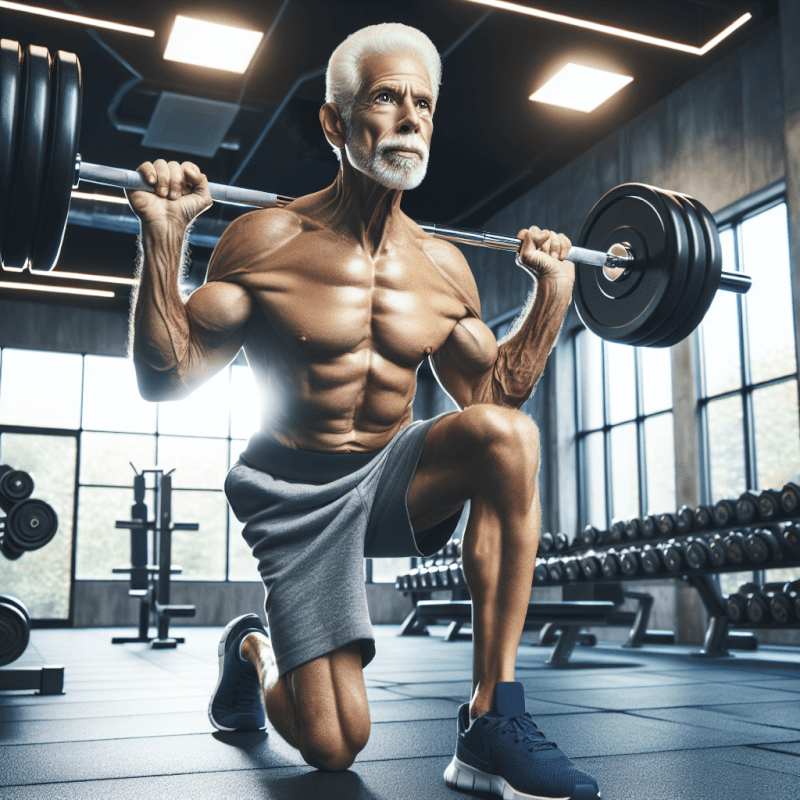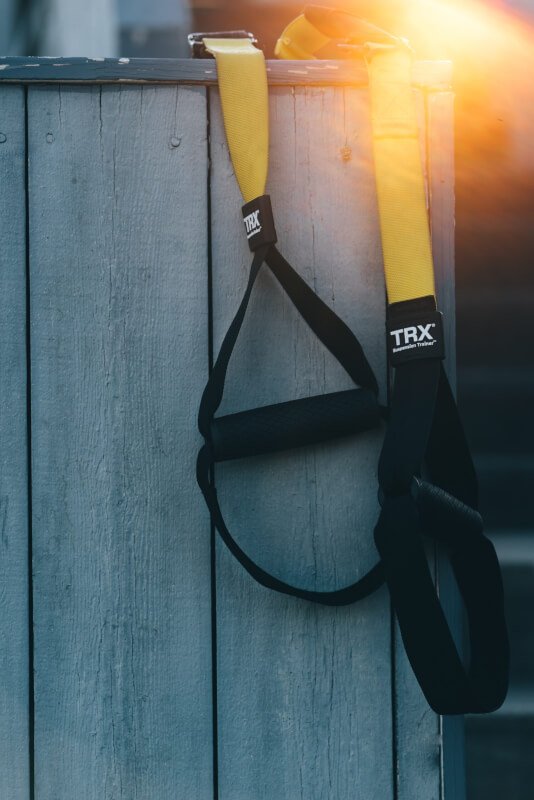Are you a boomer looking to stay fit and healthy well into your 60s and beyond? Look no further! This article is your ultimate guide to boomer fitness over 60. We will explore the benefits of staying active, offer tips on incorporating exercise into your daily routine, and discuss the importance of maintaining a balanced diet. Whether you’re already an active individual or just starting your fitness journey, this article has something for everyone. So put on your sneakers, grab a water bottle, and let’s get moving towards a healthier and happier you!

The Importance of Fitness for Boomers over 60
As a boomer over 60, maintaining your fitness and overall health is crucial for enjoying a high quality of life. Regular exercise not only helps you stay physically fit, but it also has a positive impact on your mental health. By incorporating the right exercise routine, you can prevent age-related health issues and boost your overall well-being.
Maintaining Quality of Life
Fitness plays a significant role in maintaining your overall quality of life as a boomer over 60. By engaging in regular physical activity, you can enhance your strength, flexibility, and balance, which are essential for maintaining your independence and performing daily tasks. With improved physical fitness, simple activities like climbing stairs or carrying groceries become easier and more enjoyable.
Preventing Age-related Health Issues
Regular exercise is essential for preventing age-related health issues that commonly affect boomers over 60. By engaging in physical activity, you can lower your risk of developing chronic diseases such as heart disease, diabetes, and osteoporosis. Exercise also helps to maintain a healthy weight, which further reduces the risk of obesity-related health conditions.
Boosting Mental Health
Exercise has a positive impact on mental health, and it becomes even more important for boomers over 60. Physical activity stimulates the release of endorphins, which are natural mood-boosting chemicals in the brain. Regular exercise can help reduce anxiety, depression, and stress, while improving cognitive function and promoting better sleep. It also provides an opportunity for social interaction, which is important for mental well-being.
Choosing the Right Exercise Routine
When it comes to choosing an exercise routine as a boomer over 60, it is important to consider your specific needs and abilities. Consulting a healthcare professional, considering individual limitations, and incorporating a well-rounded routine are key to ensuring a safe and effective fitness regimen.
Consulting a Healthcare Professional
Before starting any exercise program, it is crucial to consult with a healthcare professional, such as your physician or a certified fitness trainer. They can assess your overall health, provide guidance on suitable exercises, and help you create a personalized fitness plan tailored to your specific needs.
Considering Individual Abilities and Limitations
Every individual has different abilities and limitations, and this should be taken into consideration when creating an exercise routine. It is important to choose exercises and activities that are suitable for your fitness level and take into account any pre-existing conditions or injuries. This way, you can avoid unnecessary strain or injury, and gradually progress at a pace that is comfortable for you.
Incorporating Strength Training
Incorporating strength training into your exercise routine is crucial for maintaining muscle mass, bone density, and overall strength. As you age, muscles naturally weaken, and bone density decreases, leading to a higher risk of falls and fractures. Strength training exercises, such as lifting weights or using resistance bands, help to counteract this decline and keep your muscles and bones strong.
Including Cardiovascular Exercises
Cardiovascular exercises are essential for maintaining a healthy heart and improving overall cardiovascular health. Activities such as walking, swimming, cycling, or dancing get your heart rate up, increase endurance, and improve circulation. Aim for at least 150 minutes of moderate-intensity aerobic exercise per week, or 75 minutes of vigorous-intensity exercise, in addition to strength training.
Incorporating Flexibility and Balance Training
Flexibility and balance training are often overlooked but are crucial components of a well-rounded exercise routine for boomers over 60. Stretching exercises help improve joint mobility and prevent muscle imbalances, while balance exercises, such as yoga or tai chi, help reduce the risk of falls and improve stability. Including these exercises in your routine can help enhance your overall flexibility, coordination, and stability.
Common Health Concerns for Boomers
As a boomer over 60, there are several common health concerns that you should be aware of and take proactive measures to address. By understanding these issues and incorporating specific exercises and lifestyle choices, you can better manage and prevent them.
Arthritis and Joint Health
Arthritis, a condition characterized by inflammation and joint pain, commonly affects boomers over 60. Engaging in regular low-impact exercises, such as swimming or cycling, can help reduce joint pain, improve flexibility, and strengthen the muscles surrounding the joints.
Osteoporosis and Bone Health
Osteoporosis, a condition characterized by decreased bone density and an increased risk of fractures, becomes more common with age. Weight-bearing exercises, such as walking or strength training, are vital for maintaining bone health and preventing osteoporosis. Additionally, ensuring an adequate intake of calcium and vitamin D through a balanced diet or supplements is essential.
Heart Disease and Cardiovascular Health
Heart disease is a significant concern for boomers over 60, as the risk increases with age. Regular cardiovascular exercises, such as brisk walking or jogging, combined with a heart-healthy diet, can help reduce the risk of heart disease and improve overall cardiovascular health.
Diabetes and Blood Sugar Management
Type 2 diabetes is a prevalent health issue for boomers over 60. Engaging in regular physical activity, maintaining a healthy weight, and following a balanced diet that includes whole grains, fruits, vegetables, and lean proteins can help manage blood sugar levels and reduce the risk of developing diabetes or its complications.
Balance and Fall Prevention
Falls are a leading cause of injury among boomers over 60, often resulting in fractures or other serious injuries. Balance exercises, such as tai chi or yoga, as well as incorporating strength training and maintaining proper footwear, can help improve overall balance, stability, and reduce the risk of falls.
Nutrition and Hydration for Boomer Fitness
A balanced and nutritious diet is essential for supporting your boomer fitness journey. Adequate protein intake, hydration, and a focus on whole foods will provide the necessary nutrients for enhanced energy and recovery.
Eating a Balanced Diet
As a boomer over 60, it is important to follow a balanced diet consisting of various food groups to ensure you receive all the necessary nutrients. Include a variety of fruits, vegetables, whole grains, lean proteins, and healthy fats in your meals to promote overall health and wellbeing.
Getting Adequate Protein
Protein plays a crucial role in repairing and building tissues as well as supporting immune function. As you age, your protein requirements may increase to help maintain muscle mass. Include lean sources of protein such as poultry, fish, beans, and tofu in your diet to meet your protein needs and support muscle health.
Staying Hydrated
Proper hydration is important for overall health, especially during exercise. It is recommended to drink an adequate amount of water throughout the day, aiming for at least 8-10 cups of water daily. Staying hydrated helps maintain body temperature, supports digestion, and keeps joints lubricated.

Creating a Sustainable Exercise Routine
Developing a sustainable exercise routine is key to maintaining long-term fitness and reaping the benefits of regular physical activity. By setting realistic goals, gradually progressing, incorporating variety, allowing for rest and recovery, and listening to your body, you can establish a routine that is enjoyable and sustainable.
Setting Realistic Goals
When starting or modifying an exercise routine, it is important to set realistic goals that align with your current fitness level and consider any health concerns. Start with small, attainable goals and gradually increase the intensity or duration to avoid overwhelming yourself or risking injury. Celebrate your progress along the way to stay motivated and committed to your fitness journey.
Gradual Progression
Gradual progression is essential for avoiding injuries and allowing your body to adapt to new exercise routines. Increase the intensity, duration, or frequency of your workouts gradually over time to challenge yourself safely. Listen to your body and be mindful of any pain or discomfort, adjusting your routine if necessary.
Variety and Fun
Incorporating variety and fun into your exercise routine keeps you excited and engaged. Try different types of exercises or activities, such as group classes, outdoor activities, or sports, to keep your workouts enjoyable. Mixing up your routine not only prevents boredom but also challenges different muscle groups, optimizing your overall fitness.
Rest and Recovery
Rest and recovery are just as important as exercise itself. Giving your body time to rest and recover allows muscles, tendons, and ligaments to repair and rebuild, reducing the risk of overuse injuries. Make sure to include rest days in your routine and listen to your body’s signals for when it needs a break.
Listening to Your Body
Listening to your body is crucial for maintaining a sustainable exercise routine. Pay attention to any signs of pain, discomfort, or fatigue during or after your workouts. If something doesn’t feel right, modify or adjust your routine accordingly. Remember, your fitness journey is unique to you, and it’s important to prioritize your health and well-being.
Joining Group Exercise Programs
Joining group exercise programs can offer numerous benefits for boomers over 60. Apart from the physical benefits, these programs provide social interaction, support, and motivation to help you stay consistent and engaged in your fitness journey.
Benefits of Group Exercise
Group exercise programs provide a supportive and encouraging environment, making it easier to stay motivated and committed to your fitness goals. They offer the opportunity to meet like-minded individuals, build connections, and foster a sense of community. Group classes also provide structured workouts led by qualified instructors who can guide and assist you throughout.
Finding Suitable Programs
There are various group exercise programs available, catering to different fitness levels and interests. Look for programs specifically designed for boomers or seniors, as they often incorporate exercises that are safe and beneficial for your age group. Consider trying different classes or activities until you find ones that you enjoy and that align with your fitness goals.
Modifying Exercises as Needed
As a boomer over 60, it’s important to listen to your body and modify exercises if necessary. Instructors are usually experienced in providing modifications for different fitness levels or specific health concerns. If something feels too challenging or causes discomfort, don’t hesitate to communicate with the instructor and ask for alternative options that suit your needs.
Socializing and Building Connections
Group exercise programs provide an excellent opportunity for socializing and building connections with fellow participants. Engaging in regular physical activity with others can create a sense of camaraderie and support, making your fitness journey more enjoyable. Building relationships with like-minded individuals can also encourage accountability and help you stay motivated.

Staying Motivated and Overcoming Barriers
Staying motivated and overcoming barriers is crucial for maintaining a consistent exercise routine as a boomer over 60. By utilizing motivational strategies, finding a workout buddy, managing time constraints, dealing with physical discomfort, and adapting to seasonal changes, you can overcome common obstacles and stay on track with your fitness goals.
Motivational Strategies
Motivation can fluctuate at times, but there are strategies you can employ to stay motivated. Set specific and achievable goals, track your progress, reward yourself for milestones achieved, and remind yourself of the benefits of staying active and healthy. Surrounding yourself with positive influences, such as motivational quotes or supportive friends and family, can also help maintain motivation.
Finding a Workout Buddy
Finding a workout buddy can significantly enhance your motivation and enjoyment of exercise. Choose someone who shares similar fitness goals or interests. Exercising with a friend not only provides accountability but also adds an element of fun and companionship to your workouts.
Overcoming Time Constraints
Finding time for exercise can be challenging, especially with other responsibilities and commitments. However, prioritizing your health is essential. Look for opportunities to incorporate physical activity into your daily routine, such as taking short walks during lunch breaks or engaging in active hobbies. Breaking down your workouts into shorter, more manageable sessions can also help overcome time constraints.
Dealing with Physical Discomfort
Physical discomfort, such as muscle soreness or joint pain, can be a barrier to maintaining an exercise routine. Ensure you are using proper form and technique during exercises to prevent unnecessary strain or injury. If you experience discomfort, listen to your body and modify your routine or seek professional advice if needed. Incorporating activities like gentle stretching or using hot/cold therapy can also provide relief.
Adapting to Seasonal Changes
Seasonal changes can impact your exercise routine, particularly if you prefer outdoor activities. During hot weather, exercise in the early morning or late evening to avoid extreme heat. In cold weather, dress appropriately in layers and exercise indoors if necessary. Adapting to seasonal changes ensures you can continue your fitness journey regardless of the weather conditions.
Safety Considerations and Injury Prevention
Prioritizing safety is essential when engaging in any exercise routine. By following safety guidelines, using proper form and technique, wearing supportive footwear, avoiding overexertion, and addressing pain or discomfort, you can prevent injuries and maximize the benefits of your workouts.
Warming Up and Cooling Down
Warming up before exercise and cooling down afterward are essential for preparing your body and preventing injuries. Spend a few minutes performing dynamic stretches or light cardio exercises to increase blood flow, warm up muscles, and improve flexibility. Cooling down with static stretches helps promote muscle recovery and prevents post-workout stiffness.
Using Proper Form and Technique
Using proper form and technique during exercises is crucial to prevent injuries and maximize the effectiveness of your workouts. If you’re uncertain about the correct form, consider working with a qualified fitness professional who can guide you. Pay attention to your body’s alignment and position to ensure you are performing exercises correctly.
Using Supportive Footwear
Choosing supportive footwear is essential when engaging in any type of physical activity. Invest in a pair of properly fitted athletic shoes that provide cushioning, stability, and support for your feet and ankles. Good footwear not only reduces the risk of foot or ankle injuries but also improves comfort and performance during exercise.
Avoiding Overexertion
Pushing yourself too hard can lead to overexertion, fatigue, and potential injury. Gradually increase the intensity or duration of your workouts over time instead of trying to do too much too soon. Listen to your body’s signals of fatigue and provide yourself with the necessary rest and recovery.
Addressing Pain or Discomfort
Pain or discomfort during or after exercise is not normal and should be addressed promptly. Ignoring pain or pushing through it can lead to further injury. If you experience persistent or worsening pain, consult a healthcare professional to evaluate the underlying cause and provide appropriate guidance.

Incorporating Mind-Body Practices
In addition to physical exercise, incorporating mind-body practices can further enhance your overall health and well-being as a boomer over 60. Mindfulness and meditation, yoga, and tai chi are beneficial practices that promote relaxation, reduce stress, improve flexibility, and enhance mental focus.
Mindfulness and Meditation
Mindfulness and meditation practices involve focused attention, deep breathing, and awareness of the present moment. These practices help reduce stress, improve mental clarity, and promote emotional well-being. Take a few moments each day to engage in deep breathing exercises or guided meditation to enhance relaxation and reduce overall stress levels.
Yoga and Stretching
Yoga combines physical poses with breath control and meditation techniques to promote flexibility, strength, and mental calmness. Regular yoga practice can enhance balance, improve posture, reduce muscle tension, and increase overall body awareness. Incorporate gentle yoga poses or stretching exercises into your routine to enhance flexibility and promote relaxation.
Tai Chi and Qigong
Tai Chi and Qigong are ancient Chinese practices that focus on slow, flowing movements, deep breathing, and mental focus. These practices promote balance, coordination, and relaxation. Participating in tai chi or qigong classes can improve flexibility, strength, and overall health while reducing stress and increasing mindfulness.
Encouraging Physical Activity in Daily Life
Incorporating physical activity into your daily life beyond structured exercise sessions can further enhance your boomer fitness. By seeking active transportation, engaging in gardening or yard work, performing household chores, and pursuing hobbies and interests that involve movement, you can maintain an active and fulfilling lifestyle.
Active Transportation
Choosing active transportation, such as walking or cycling, for short distances instead of relying on motorized transport, is a great way to incorporate physical activity into your daily life. Opting for stairs instead of elevators or escalators whenever possible also adds to the overall physical activity level.
Gardening and Yard Work
Gardening and yard work provide opportunities for physical activity, such as bending, lifting, and stretching. Maintaining your garden or yard not only enhances your space but also engages multiple muscle groups, promotes flexibility, and boosts overall fitness. Spend time planting, weeding, or harvesting, and enjoy the benefits of being outdoors while staying active.
Household Chores
Household chores are another way to stay active. Activities such as vacuuming, sweeping, mopping, or gardening can get your heart rate up and burn calories. Break down chores into smaller tasks and spread them throughout the week to incorporate regular physical activity.
Pursuing Hobbies and Interests
Engaging in hobbies and interests that involve movement or physical activity is an enjoyable way to stay active. Whether it’s dancing, swimming, golfing, hiking, or joining a sports team, pursuing activities you love ensures that you stay motivated and engaged in physical activity for the long term.
By making fitness a priority, choosing the right exercise routine, addressing common health concerns, focusing on nutrition and hydration, creating a sustainable routine, joining group exercise programs, staying motivated, prioritizing safety, incorporating mind-body practices, and encouraging physical activity in daily life, you can embrace boomer fitness over 60 and enjoy a healthy and fulfilling lifestyle.



